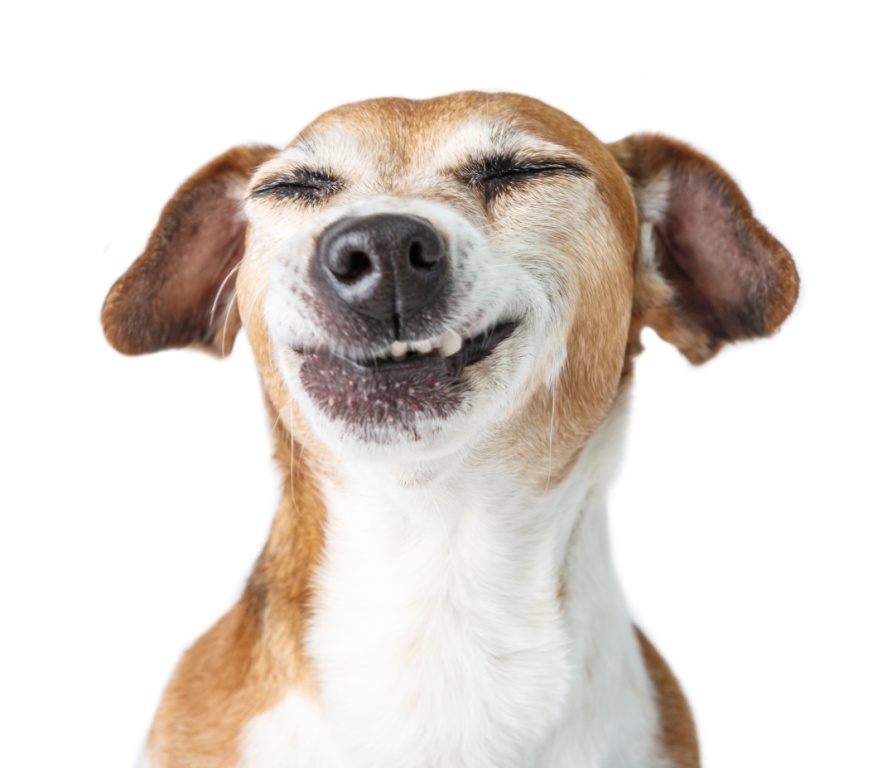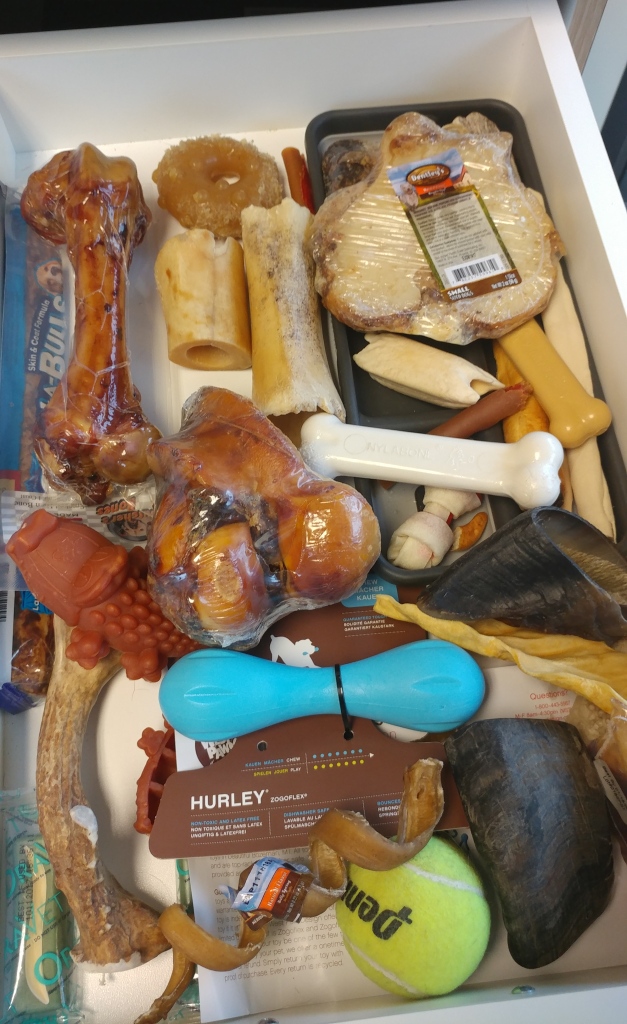Smile!
Happy Mouth = Happy Pets!
As a Certified Vet Tech, I know better than to wait a full year before getting a dental cleaning. While working at a clinic I was on the frontline of identifying early stage dental disease. So why did I wait so long? I was lazy. When I finally went for my cleaning I had eight cavities. I almost screamed when the dentist shared this news.
Regular cleanings are just as important for your animals. While you may not be talking about cavities during your pet’s annual wellness exam, you will be discussing periodontal disease, the risk of fractured teeth, and what to expect from your animal’s dental cleaning. Being proactive with oral health should be a priority for all pet parents.
The most common disease in pets is periodontal disease, which can lead to infections that introduce bacteria into other parts of the body. Simply put, bad teeth can lead to a very sick animal. Research shows that inflammation in any part of the body can have a serious negative impact on your pet’s internal organs.
While oral exams are conducted during all routine visits, we as pet parents are their first line of defense. Signs of problems may include pawing at the mouth, dropping food, aggression when touched on or around the face, and/or disinterest in the food bowl. Any of these symptoms warrant a visit to the Vet. It’s important to remember that animals are stoic, so it’s up to us to recognize even small indicators that may signal dental disease.
What to expect with routine dental exams and cleaning
It begins with a comprehensive oral examination to evaluate structures of the face, head and neck. Then intraoral structures are examined, including teeth and soft tissues.
Scaling and polishing are the most common dental cleaning procedures. Dental radiology (x-ray) is also extremely important, as disease can easily be missed without examining beneath the gum margin. The gum margin is the border of the gingiva surrounding, but unattached to, the substance of the teeth.
Speaking with the experts at the Animal Dental Clinic NW (ADCNW), a dental specialty clinic in Lake Oswego, reinforced what I was taught about oral health in Vet Tech School. It also made me appreciate how very lucky we are to have outstanding expertise throughout this community.
“You care most about what’s happening under the gum-line where hidden infection and pain resides,” explains Dr. Jean Batigg, DVM, DAVDC of ADCNW. “But without x-rays you cannot see what’s most important.” Pets must be sedated to obtain quality radiographs.
The goal is to avoid pets from having to live years and years in oral pain, according to Dr. Jacqueline Myers DVM of Forever Pet Dental. "Most dogs and cats require at least annual dental cleanings to maintain good oral health. The American Animal Hospital Association recommends dental cleanings annually after one year of age for cats and small dogs, or two years of age for large dogs,” Myers says. “To be effective, this must be done under general anesthesia in a veterinary setting, and must include dental x-rays.”
Board Certified Veterinary Dentists offer specialty services in complex cases involving dental disease or injury. In many cases, Veterinarians in general practices refer cases to specialists when, for example, the dog or cat is at a higher anesthesia risk. Some general practitioners have Vet Techs with dentistry certification on staff as well.
With that in mind, world-class animal dentistry/oral surgery is performed every day at ADCNW, whose number-one priority, according to Batigg, is oral health. Also a top concern is anesthesia safety; many ADCNW patients are over eight years old. “There are a lot of options,” says Batigg, adding that “95 percent of cases can have anesthesia.”
At many general practice clinics throughout Portland, two board certified Veterinary Anesthesiologists, Dr. Heidi Shafford and Dr. Lynnelle Graham, monitor patients with medical risks including diabetes and anxiety. Age is also a consideration, and both doctors are experts in providing anesthesia care for older pets. They both partner with clinics and offer their services so at risk patients can be safely operated on — and this goes beyond dental surgery.
Signs of periodontal disease
Disease left untreated in your pet’s mouth causes continuing unnecessary pain. If you see any of these common symptoms of dental problems, see your Veterinarian as soon as possible:
- Red, swollen gums
- Increased drooling
- Dropping food from the mouth
- Whining while eating
- Loss of appetite or weight
- Loose or discolored teeth
- Bleeding from the mouth
Preventing dental disease
Periodontal disease is difficult to control once it has developed. The good news is, it is preventable with a combination of home dental care and annual veterinary care.
Daily brushing is necessary to minimize calculus formation. Reduction of bacteria in the mouth can be accomplished through not only brushing, but diet, chews, and toys designed to support oral health.
Water additives with the Veterinary Oral Health Council seal of acceptance also support a pet’s preventive oral healthcare routine.
Start early! Before introducing a toothbrush, massage your puppy’s or kitten’s gums to accustom them to having their mouth manipulated. “You must train your puppy to open its mouth so you can safely check his teeth,” says Batigg.
Pets prone to dental problems
Some breeds are more susceptible to dental problems than others. The smaller the breed, the greater chance of periodontal disease. Because the teeth are closer together, plaque and tartar builds up in the space in between.
Additionally, smaller breeds tend to live longer, giving periodontal disease more time to progress.
[What] to chew or not to chew
Unfortunately, I know from experience that excessively hard chew toys like antlers are a common cause of broken teeth in dogs. This is extremely painful, and can sometimes become abscessed. I recently learned this with my dog, Walter, as he had a pre-molar extracted as a result of chewing aggressively on an antler.
According to the veterinary experts with VetzInsight, “Watch a dog with a bone and you will see he grabs it with both front paws and munches on it on the side of his teeth. Human teeth chew straight up and down, but animals chew in the back where the teeth are made to shear food into little pieces; like scissors, they go past each other. When dogs do that and crunch down on something too hard at just the right angle, a piece of the upper fourth premolar breaks off, leaving a slab. Now the teeth slide over each other like pinking shears.”
Dos
· Flexibility is a must!
· Consider brands made with potato starch, which can be hydrated when they dry out (TIP: moisturize toys with a slice of bread in a food storage container)
· Be present and aware whenever your pet is enjoying chews
Don’ts
Offer chews that cannot be ingested, which can cause a GI obstruction. Use products that can fracture a dog’s tooth, including:
· Nylabones
· Yaks
· Rocks
· Hooves, horns and antlers
Your pet will thank you for a healthy mouth! For dogs and cats to stop eating they must be in terrible pain. Schedule an annual exam now, and if you suspect discomfort or any of the symptoms mentioned above, get your pet seen right away.
And start brushing their teeth!
Anesthetic-free dentistry (AFD)
Experts in pet dentistry are very clear about Anesthesia Free Dentistry or No Anesthesia Dentistry (NAD). The American Veterinary Dental College (AVDC) simply states that an oral exam and x-rays cannot be done on an awake pet, stating: “A thorough oral health exam can’t be done on a dog or cat that is awake. During a thorough oral health exam, all surfaces of your pet’s mouth are evaluated and radiographs are taken. This allows a veterinarian to identify painful problems including broken teeth, periodontal disease or even oral tumors.”
As a Certified Vet Tech, longtime PR veteran and content marketing expert, Christy Caplan brings her unique understanding of social and digital media to connect dog lovers to brands both on and offline. She lives with three hounds – two Doxies and a Beagle/Basset Hound mix,
who constantly teach her about life and companionship. Follow Christy at mylifewithdogspdx.com.




